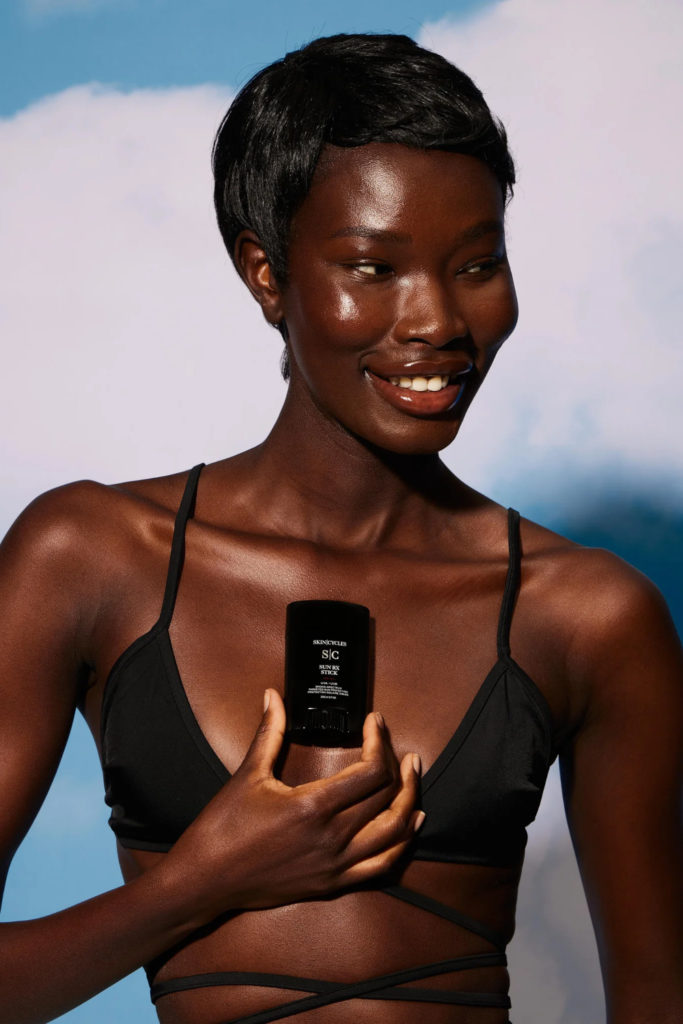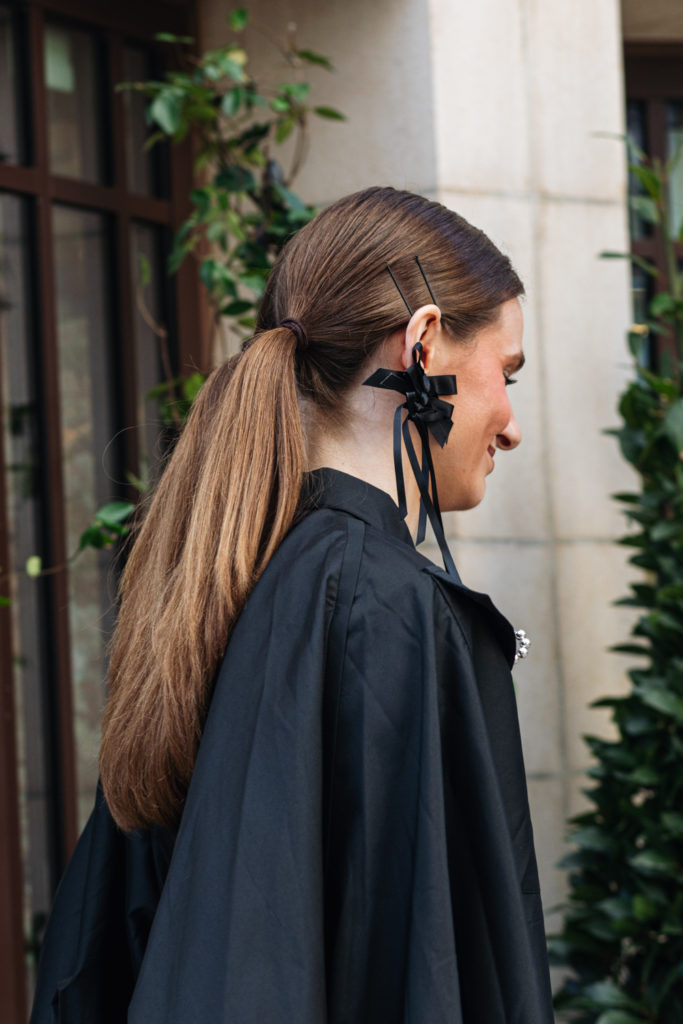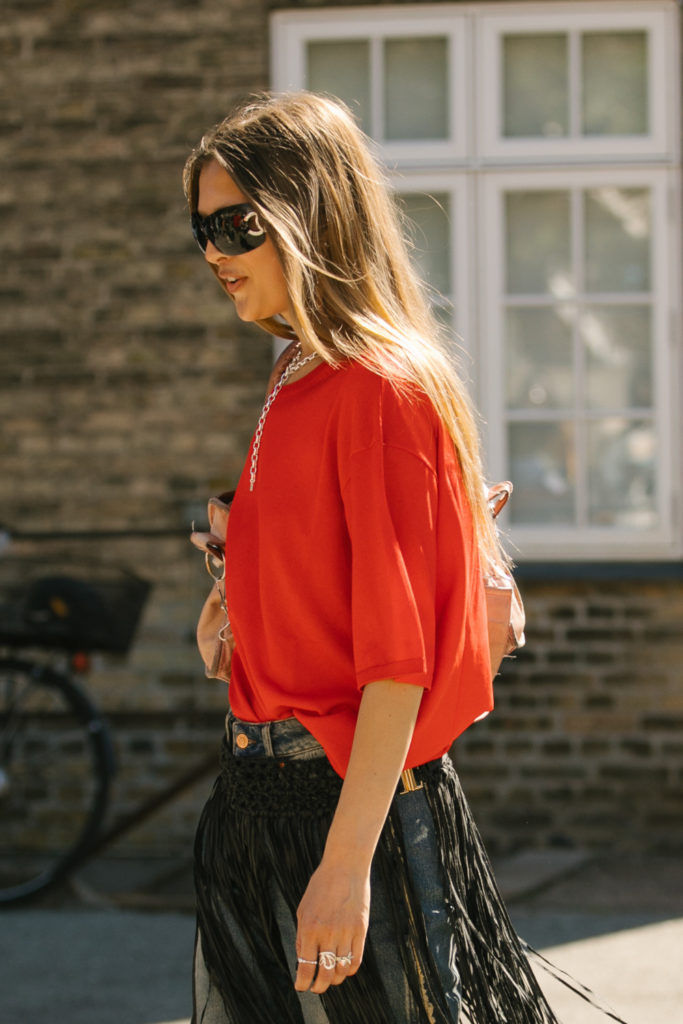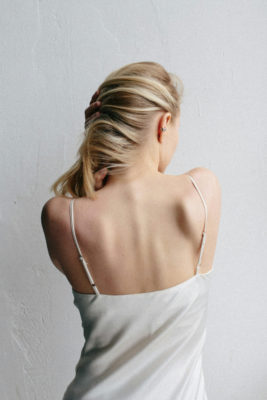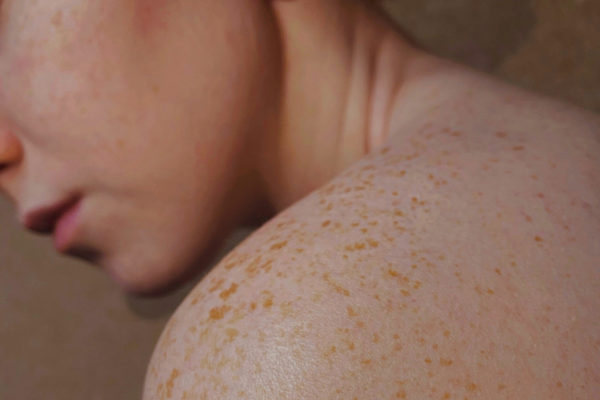TikTok’s Negative Canthal Tilt Trend – Should We Take It Seriously?
By
10 months ago
A deep dive into the latest beauty trend taking over TikTok
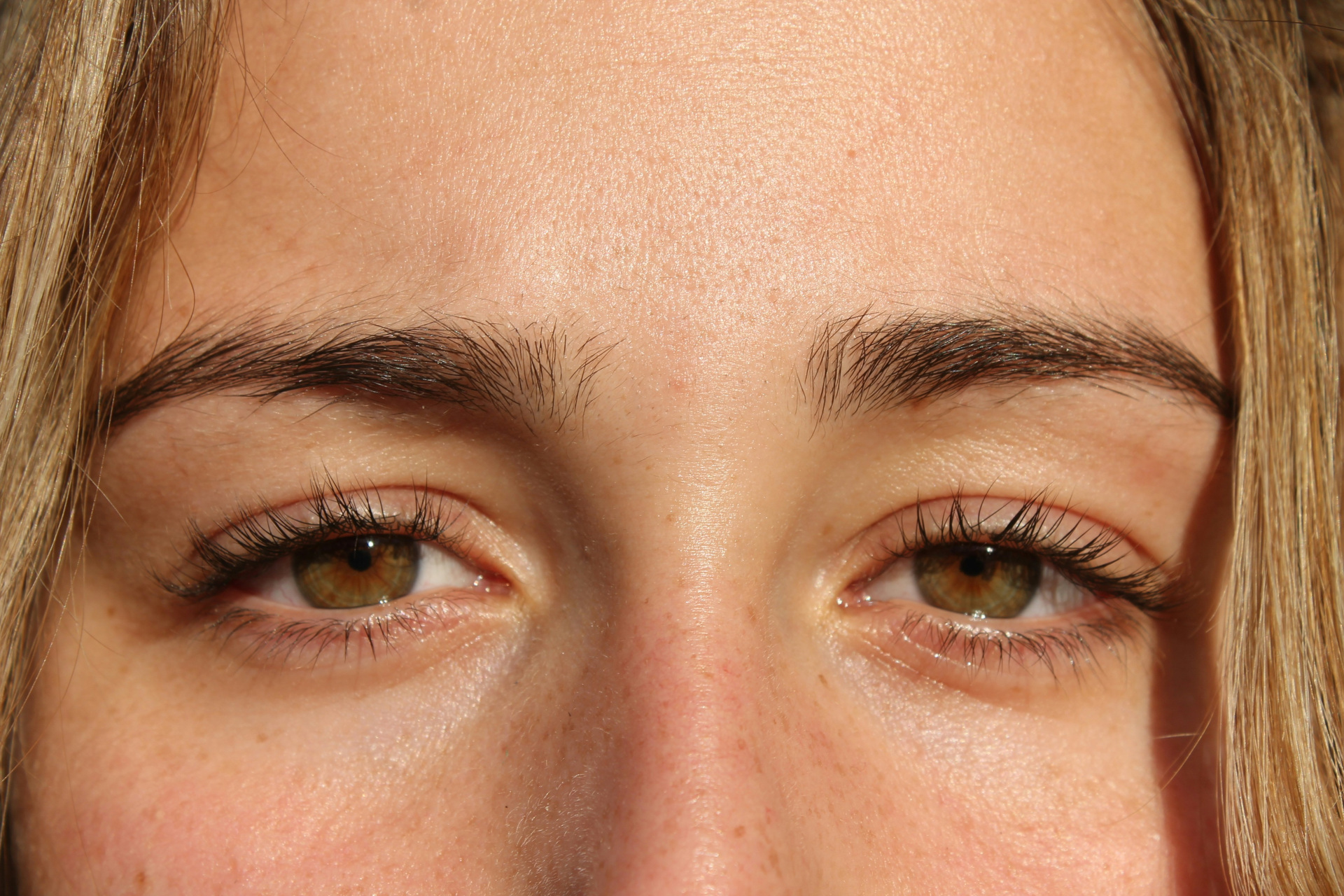
TikTok is the home of quirky videos, viral trends and, in this case, controversial filters. The latest one doing the rounds on the app is the canthal tilt filter, which shows users whether they have a ‘positive’, ‘neutral’ or ‘negative’ eye tilt – and it’s sparking a discourse on which is the most attractive. (Hint: it’s bad news for those with a negative canthal tilt.) But how much sway does TikTok have when it comes to ranking the attractiveness – or rather, the unattractiveness – of individual features? We asked a team of aesthetics experts to weigh in.
What Is A Canthal Tilt?
‘A canthal tilt is described as the angle between the inner corner of the eye and the outer corner of the eye,’ explains Dr Elizabeth Hawkes, a consultant oculoplastic surgeon specialising in blepharoplasty, eye surgery and advanced facial aesthetics. ‘It can be described as positive, neutral or negative, depending on how the inner and outer corners align.’
Out of these labels, it’s the ‘negative’ canthal tilt that has been taking the internet by storm. But what actually is it? ‘A negative canthal tilt is when the outer corner of the eye is lower than the inner corner,’ Dr Hawkes continues. ‘This can be the eye shape that someone is naturally born with. However, it can also be noticed as a sign of the ageing process and can at times make someone look tired or even sad. In comparison to the negative canthal tilt, the positive canthal tilt sees the outer corners of the eyes as aligned slightly upwards towards the temples, which contrastingly can give a more youthful and energised appearance. The neutral canthal tilt sits between the two, with the corners of the eye sitting level with each other.’
@chrisp.md What is your canthal tilt and how can things like makeup affect it? #canthaltilt #makeup #eyemakeup #plasticsurgery #doctortok #nowyouknow #fypシ ♬ original sound – Chris P., MD
Searches for ‘negative canthal tilt’ have soared on video sharing platform TikTok, with videos tagged under #negativecanthaltilt amassing over 140 million views. The main takeaway from content creators seems to be that a ‘negative’ category is, well, a negative thing. The belief is that it can make you seem less physically attractive.
‘It’s an anatomical feature that plays a role in facial harmony and perceived attractiveness and has recently become a focal point of discussion on social media regarding facial aesthetics,’ says Dr Ducu Botoaca, owner of Ducu Clinics. ‘While this is not inherently detrimental, it can contribute to a more tired or aged appearance, potentially impacting one’s self-esteem. On the other hand, a positive canthal tilt is present, with the outer eye corners being higher compared to the inner corners. This is often associated with a more youthful and refreshed look.’
How To Tell If You Have A Negative Canthal Tilt
If you’re curious to know what kind of canthal tilt you have, you can simply check by looking in a mirror. ‘You can tell you have a negative canthal tilt by just looking at the medial (inner) corner across to the lateral (outer) corner of the eye,’ says Nicole O’Grady, Founder and Advanced Aesthetician at Olivia Cole Clinic. ‘If the outer corner goes down slightly, then that is a negative tilt.’
Dr Ducu says you can also figure out whether you have a negative canthal tilt by checking a photo of yourself. ‘One easy way to determine whether you have negative canthal tilt is by taking a photo,’ he says. ‘Draw a straight line from the inner corner of the eye through the outer corner and into the temple. For a negative canthal tilt, you’ll see both lines slanted downwards towards the temples. Alternatively, consulting with a cosmetic doctor can provide some professional insight.’
What Causes A Negative Canthal Tilt?
For the most part, your canthal tilt is just like any other facial feature. It’s determined by genetics, and doesn’t necessarily have a ’cause’. ‘Various factors, including genetics and facial structure, contribute to canthal tilt,’ explains Dr Ducu. He does however mention that over time your canthal tilt can change with the effects of aging. ‘Another leading cause is aging. The surrounding skin loses its laxity, which can then lead to downturned or hooded eyes.’
But it’s not a guaranteed fate. ‘With age it is possible that due to laxity of the surrounding tissues, you may develop a negative canthal tilt however, this does not always happen,’ adds Dr Ross Perry, the Medical Director of Cosmedics Skin Clinics.
@syrianpsycho if your tilt is slightly negative, MOST people WONT NOTICE. 🤝 #fyp #based #syrianpsycho #selfimprovement #trending ♬ transgender – slowed + reverb – slō & twilight & Tazzy
Can It Impact Your Attractiveness?
This seems to be the big question. While TikTok may try to convince you that a negative canthal tilt is unattractive, our aesthetics specialists aren’t so easily swayed. ‘It doesn’t automatically make you less attractive. There are many other factors that add to the concept of perceived attractiveness, such as facial symmetry,’ says Dr Ducu.
It’s also worth nothing that many celebrities, including Timothée Chalamet, Anne Hathaway, James McAvoy, Katie Holmes and, historically, Marilyn Monroe, have a negative canthal tilt. ‘These are extremely attractive people,’ highlights Dr Perry. ‘And they show that this one characteristic on its own is not an indicator of attractiveness.’
‘If you are born with it genetically, then no, a negative canthal tilt will not make you less attractive. It’s just a feature like any other,’ adds Nicole. She emphasises that it’s more the association with looking tired or older that can make people find it unattractive.
@qovesstudioWhat Makes Timothee Chalamet So Attractive?♬ original sound – QOVES
The desire to ‘fix’ a negative canthal tilt is also likely linked to the desire for more ‘lifted’ features. ‘While the TikTok trend of questioning your attractiveness based on your canthal tilt is not how we would ever define beauty, there is weight to the fact that our eyes can re energise our appearance, making us appear fresher and well-rested above all else,’ says Dr Hawkes. ‘Social media has promoted the act of “lifting” features; just look at the fox eye trend.’
‘People are analysing their faces more frequently than ever before,’ adds Dr Ducu. ‘Following COVID and working from home, many people were seeing themselves on video calls and on phone cameras. This led to people seeking facial cosmetic enhancements, with the goal to look younger. Social media has turned its attention towards a more “snatched” look, which means achieving a more lifted and youthful appearance.’
Can You ‘Fix’ A Negative Canthal Tilt?
In short, yes you can try and ‘fix’ a negative canthal tilt – either surgically or with threads and botox. ‘As a consultant oculoplastic and ophthalmic surgeon, I have seen a rise in enquiries for both aesthetic and surgical procedures around the eyes,’ says Dr Hawkes. ‘From a surgical perspective, a blepharoplasty is a great way to lift the upper and lower eyelids. It repairs droopy eyelids and may involve removing excess skin, muscle and fat.
‘From a non-surgical perspective, we can also lift the tail of the brow with Botox and adding filler to the temples,’ she adds. ‘These treatments come with very little downtime and are very popular in clinic.’
But surgical procedures aren’t something that our experts recommend lightly. ‘Cosmetic surgery around the eye is extremely difficult to reverse and so I would urge anyone wishing to have cosmetic surgery based on a trend to think twice before doing so,‘ says Hawkes. ‘The “fox eye” lift is a good example of this. This non-surgical “tweakment” was supposedly inspired by celebrities like Bella Hadid and Kendall Jenner, and involves plastic threads being inserted into the sides of the eye to stretch the skin.
‘Changing the slant of the brow line will make you look very odd,’ she continues. ‘The procedure is also risky and not best practice. When you pull the skin back, the excess has nowhere to go, so it creates dents and folds near the eyebrow. In many cases, the threads used don’t dissolve naturally in the body. This means patients are left with permanent lumps caused by the scarring underneath the skin.’
@uhmmokayyy22 Idk just a random post #randomhashtagstogetmeviews #foryoupageofficiall #uhmmokayyy22 #lowcanthaltilt #positivecanthaltilt #negativecanthaltilt #filters #christinascully #idkwhatimdoing #imnotfamous ♬ original sound –
‘You can change the canthal tilt of your eye with surgery. Is it worth it? I would say no,’ adds Nicole. ‘I think individuals want a positive canthal tilt because of these new “ideals” on social media on what beauty is. Filters tend to pull the eye up and out at the corner, which has influence our perception of beauty. If you have sagging or heavy eyelids, contributing to the look of a canthal tilt, this can be remedied with botulinum injections (Botox) instead of surgery. We would inject the orbicularis oculi muscle on the outer corner to encourage a lift.’
One of our experts, Dr Perry, even goes as far as to say that no ‘fix’ is needed. ‘There is no reason to alter a negative canthal tilt. It is simply part of a person’s make up,’ he says. ‘The canthal areas can be adjusted to help with certain eye conditions such as an ectropion, but on the whole it’s not a necessary procedure.’
The Final Word: Should We Believe TikTok?
The negative canthal tilt dilemma is hotly debated on TikTok, with the overarching consensus dubbing it unattractive. ‘There has been this connotation that having a negative canthal tilt automatically makes you less attractive,’ says Dr Ducu. ‘But there are no “good” and “bad” features.
‘Trends change over time, so this trend, like many others, will be overtaken by another,’ he continues. ‘It’s essential to foster inclusivity and celebrate diverse facial characteristics. We strongly recommend constantly researching and having a consultation with a medical professional to decide what will be the best course of action suitable for your features. Embracing individuality and reframing beauty standards beyond rigid ideals can promote healthier self-perception and foster a more inclusive beauty culture overall.’
‘Like all crazes on TikTok, this perception of the canthal tilt is not indicative of normal society,’ adds Dr Perry. ‘Trends come and go, and given the nature that this is one small part of one’s overall facial features I don’t feel it’s particularly important to focus on this one aspect. As a whole, I do feel that trends like this, while potentially informative, are not necessarily always a positive. There is no new unique guide to one’s attractiveness, and also everybody’s view on what is attractive is completely different. So again, labelling certain characteristics as unattractive or attractive, is foolhardy.’
In other words: take it all with a pinch of salt. Whatever category your canthal tilt may fall under, it’s not a measure of you attractiveness. As with most things that blow up on TikTok, the hype is short-lived and usually dramatised for views and engagement. And as the aforementioned celebrities show, a negative canthal tilt can be just as beautiful as a positive or neutral one. Filters aren’t indicators of beauty, and neither are influencers. So sit back, let TikTok do its thing, and watch as the fad quickly finds itself replaced by something new. (And no doubt equally as odd.)
Featured image: Laura Cukaj, Unsplash




